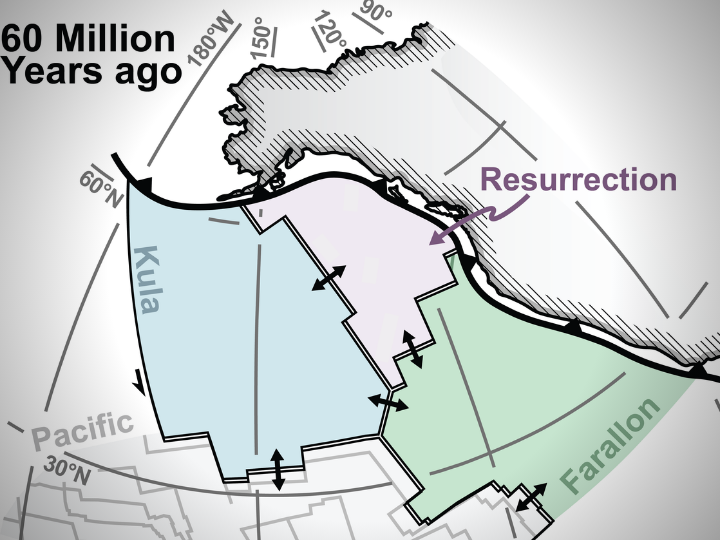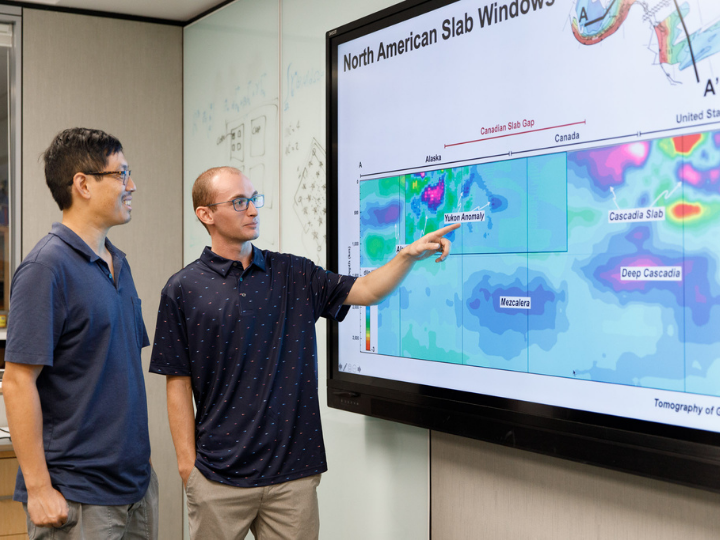
The Pacific Plate is the largest of Earth’s 17 currently known tectonic plates. However, during the Cenozoic Era about 60 million years ago, the Pacific Basin consisted of some other tectonic plates that have since subducted into Earth’s mantle. Geologists have always known about two plates in the Pacific Ocean during this era, known as Kula and Farallon. Now, in a new study, researchers have confirmed the existence of a previously proposed third ancient Pacific plate called Resurrection.
Reverse engineering tectonic movements
Tectonic plates glide over Earth’s mantle, in the outermost shell known as the lithosphere. These plates can be thought of like pieces of a cracked shell that rest on the hot, molten rock of Earth’s mantle and fit snugly against one another.
Across the eons, tectonic plates have changed significantly. When two such plates come together, one of them has to give in. Kula and Farallon, both oceanic plates under the northern Pacific Ocean, sunk under the North American plate millions of years ago.
The fate of Ressurection, which is believed to have formed a special type of volcanic belt along the coast of Alaska and Washington State, had until now been a matter of contention.
“We believe we have direct evidence that the Resurrection plate existed. We are also trying to solve a debate and advocate for which side our data supports,” Spencer Fuston, a third-year geology doctoral student at the University of Houston, said in a statement.

The geologists at the University of Houston analyzed existing mantle tomography images, which are like a CT scan of the Earth’s interior. They employed a technique called slab unfolding that essentially turns back the clock, enabling the researchers to reconstruct what tectonic plates in the Pacific Ocean looked like millions of years ago.
This 3D mapping technique pulled out subducted plates, stretching them to their original shapes. Volcanoes are known to form right at the boundaries of tectonic plates, and the boundaries of the reconstructed Resurrection plate match well with the location of ancient volcanic belts in northern Canada.
In the animation below, you can see how the Kula, Farallon, and Resurrection tectonic plates sunk beneath the North American Plate 60 million years ago to the present day.
Since volcanoes heavily impact the climate, this method could prove useful in modeling the earth and its past climate.
The findings appeared in the journal GSA Bulletin.









